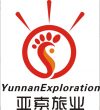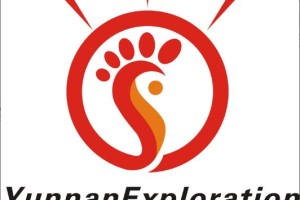
Hiking Tour Map from Baisha Old Town to Wenhai Lake in Lijiang
Geographical Location
Lijiang, a city full of charm, is located in the northwestern part of Yunnan Province, and Baisha Old Town and Wenhai Lake are embedded in this magical land. Baisha Old Town is located in the northern part of the Lijiang Basin, at the foot of Yulong Snow Mountain, with an altitude of about 2450 meters, and is an important part of the “World Cultural Heritage Lijiang Ancient City”. Wenhai Lake is hidden in the mountains at an altitude of about 3100 meters, belonging to a seasonal lake in a high-altitude wetland area. Traveling from Baisha Old Town to Wenhai Lake, you will go through mountains and rivers, and the scenery along the way will change continuously with the increase in altitude, which is intoxicating.
Cultural History
Baisha Old Town has a long history, with more than 800 years of accumulation, making it one of the oldest and most authentic ancient towns in Lijiang. It is the first settlement of the Naxi people after entering the Lijiang Basin, witnessing the transformation of the Naxi people from nomadic to agricultural, and is the cradle of Naxi culture. There are many ancient temples preserved in the ancient town, such as Liuli Hall and Dabaojigong, among which the Baisha Murals are well-known. These murals were created during the Ming and Qing Dynasties, with rich themes and a fusion of the artistic styles of Han, Tibetan, Naxi and other ethnic groups, and have extremely high artistic value.
Folklore
The Naxi ethnic group’s folk customs are fully displayed in Baisha Old Town. The traditional Dongba culture of the Naxi ethnic group is mysterious and unique, and the Dongba script is known as the only pictographic writing in the world that is still in use. In the ancient town, you can see Naxi elders sitting leisurely on the street in traditional costumes, enjoying the slow time. The traditional festivals of the Naxi ethnic group are rich and colorful, such as the Sanduo Festival. People dress up and hold grand sacrificial ceremonies to commemorate the Naxi protective god “Sanduo”. During the festival, there are also horse racing, song and dance performances and other activities, which are very lively.
Weather and Best Time to Visit
Lijiang is a low-latitude, high-altitude area with a variety of climate types and a vertical climate characteristic of “four seasons on one mountain and different weather within ten miles”. Generally speaking, spring (March – May) and autumn (September – November) are the seasons suitable for hiking. In spring, everything is recovering, and wild flowers in the mountains are blooming, making the whole hiking route full of vitality. In autumn, the weather is cool, the sky is blue, and you can clearly see the magnificent scenery of Yulong Snow Mountain. Summer (June – August) is the rainy season with a lot of precipitation. The roads may be muddy, and geological disasters are prone to occur in mountainous areas, so you need to pay special attention to safety when hiking. Winter (December – February) is cold with strong winds. The wind is particularly strong around Wenhai Lake, but the snow scenery of the snow mountain is more magnificent at this time. Before setting out, be sure to check the weather forecast. According to the weather forecast, the recent weather in Lijiang City is mostly sunny or cloudy, with temperatures ranging from 5 to 25 degrees Celsius, which is suitable for travel.
Hiking Route Description
Starting Point: Baisha Old Town (Baisha Old Town)
Ending Point: Wenhai Lake (Wenhai Lake)
Total Distance: About 12 kilometers, with an altitude increase from about 2400 meters to 3150 meters.
Route Features: There are alpine lakes, pastures, and flowers along the way, with beautiful scenery and fresh air.
Route Details:
- First Section: Starting from Baisha Old Town, walk west along the country road and pass by Fuguo Monastery (Fuguo Monastery), which is about 15 kilometers away from Wenhai Lake. You can enjoy the full view of Lijiang Ancient City and experience the tranquility and simplicity of the Naxi countryside.
- Second Section: Continue to move forward and arrive at the Wenhai Viewpoint, which is the best place to overlook Wenhai Lake. You can take a short break here and enjoy the lake and mountain scenery.
- Third Section: Descend from the viewpoint along the path to Wenhai Wetland Park. This is a sea of flowers, which is very suitable for taking photos and sightseeing.
- Fourth Section: Continue along the path, pass through a spruce forest, and arrive at the cabin base camp. The altitude here is about 4000 meters, which is the highest point of the hiking route.
- Fifth Section: Set off from the base camp, descend along the path, pass through an alpine meadow, and finally arrive at Wenhai Lake.
Hiking Tips:
- Time: The whole journey takes about 3 – 4 hours. It is recommended to set off in the morning.
- Equipment: It is recommended to wear comfortable hiking shoes, carry enough water and food, as well as sun protection and cold protection supplies.
- Transportation: If you do not want to hike the whole way, you can also choose to take local transportation to Wenhai Lake.
Precautions
-
Difficulty and Physical Allocation: The difficulty is moderate. All the climbing is concentrated in the first half, which is a test of physical strength and cardiopulmonary function. The heart rate is easy to rise. It is necessary to allocate physical strength reasonably and take a break in time. The second half of the journey is all downhill. However, if you choose to take a shortcut and go down the mountain along the mountain road, some sections are steep. It is recommended to carry trekking poles or crutches to assist.
-
Crossroads and Navigation: There are many crossroads along the way. Be sure to pay attention to the track at all times to prevent taking the wrong fork. You can use mobile navigation software or carry a map and compass.
-
Vegetation Protection: Yunnan has rich vegetation, and some sections are covered with thorns. When walking, pay close attention to the road conditions and do not touch the plants around you casually to avoid being pricked.
Transportation
To Baisha Old Town
-
Public Transport: You can take bus No. 6 from the urban area of Lijiang to Baisha Old Town. It is economical, but you need to pay attention to the bus operation time and the interval between buses.
-
Car Rental: Renting a car or taking a chartered car is more convenient and flexible. You can arrange your itinerary freely and stop to enjoy the scenery along the way if you encounter beautiful scenery.
Return from Wenhai Lake
Since there are no buses or scheduled vehicles to Wenhai Lake at present, you need to plan your return transportation in advance. You can contact the car rental driver in advance to arrange the pick-up time and place. If there are many people in your group, you can also consider taking a chartered car back.
Cuisine
In Baisha Old Town, you can taste authentic Naxi cuisine. For example, Naxi grilled fish, the fish body is grilled to a golden and crispy, with special sauce and various side dishes, the taste is spicy and rich. Jidou cold jelly is also a must-try specialty. The jelly made from chicken beans has a smooth texture, which can be served cold or pan-fried, and then mixed with chili, Sichuan pepper and other seasonings, which is unforgettable. There is also Naxi rice sausage, which is made by stuffing rice and pig’s blood into pig’s intestines, steamed and then sliced to eat, with a unique flavor. Local restaurants such as Chef Chen’s Baisha Flavor House and Yulong Baisha Yuhu People’s Inn can let you taste pure Yunnan cuisine and Yunnan farmhouse dishes.
Shopping
There are many characteristic handicraft shops in Baisha Old Town, selling traditional Naxi handicrafts. Dongba paper is made from the special plant fiber of the local area. The paper is thick and mothproof, with exquisite Dongba characters and patterns drawn on it, which is of great collection value. Naxi embroidery has bright colors and delicate stitches. The embroidery products include handkerchiefs, clothes, etc., which are suitable for personal use or as gifts for relatives and friends. In addition, there are also wood carvings, silver ornaments and other handicrafts, each of which embodies the wisdom and hard work of Naxi craftsmen.
Accommodation
Baisha Old Town Accommodation
-
Lijiang Baisha Courtyard Boutique Resort Hotel: Located at No. 33, Sanyuan Village, Baisha Old Town, the hotel inherits the Naxi ethnic architectural style and integrates simple and luxurious decoration. It has a variety of room types, including Yulong Snow Mountain view suites and garden view suites. Here, you can enjoy the scenery of Yulong Snow Mountain in the room and experience the Naxi ethnic characteristic leisure courtyard, feeling the perfect combination of the ancient and the modern.
-
Lijiang Baisha Old Town Juyuanxi Inn: Located at No. 40, Jiewei Village, Baisha Town, Baisha Village Committee, the per capita consumption is about 192 yuan. The inn has a quiet environment and thoughtful service, allowing you to deeply experience the quiet life of the ancient town.
Wenhai Lake Accommodation
There are several small inns around Wenhai Lake. Although the accommodation conditions are relatively simple, they can bring you closer to nature. You can wake up in the morning and enjoy the beautiful scenery of Wenhai Lake. However, the accommodation resources are limited. If you plan to stay at Wenhai Lake, it is recommended to book in advance.

 7 Days GolfingTour
7 Days GolfingTour
 8 Days Group Tour
8 Days Group Tour
 8 Days Yunnan Tour
8 Days Yunnan Tour
 7 Days Shangri La Hiking
7 Days Shangri La Hiking
 11 Days Yunnan Tour
11 Days Yunnan Tour
 6 Days Yuanyang Terraces
6 Days Yuanyang Terraces
 11 Days Yunnan Tour
11 Days Yunnan Tour
 8 Days South Yunnan
8 Days South Yunnan
 7 Days Tea Tour
7 Days Tea Tour
 8 Days Muslim Tour
8 Days Muslim Tour
 12 Days Self-Driving
12 Days Self-Driving
 4 Days Haba Climbing
4 Days Haba Climbing
 Tiger Leaping Gorge
Tiger Leaping Gorge
 Stone Forest
Stone Forest
 Yunnan-Tibet
Yunnan-Tibet
 Hani Rice Terraces
Hani Rice Terraces
 Kunming
Kunming
 Lijiang
Lijiang
 Shangri-la
Shangri-la
 Dali
Dali
 XishuangBanna
XishuangBanna
 Honghe
Honghe
 Kunming
Kunming
 Lijiang
Lijiang
 Shangri-la
Shangri-la
 Yuanyang Rice Terraces
Yuanyang Rice Terraces
 Nujiang
Nujiang
 XishuangBanna
XishuangBanna
 Spring City Golf
Spring City Golf
 Snow Mountain Golf
Snow Mountain Golf
 Stone Mountain Golf
Stone Mountain Golf












